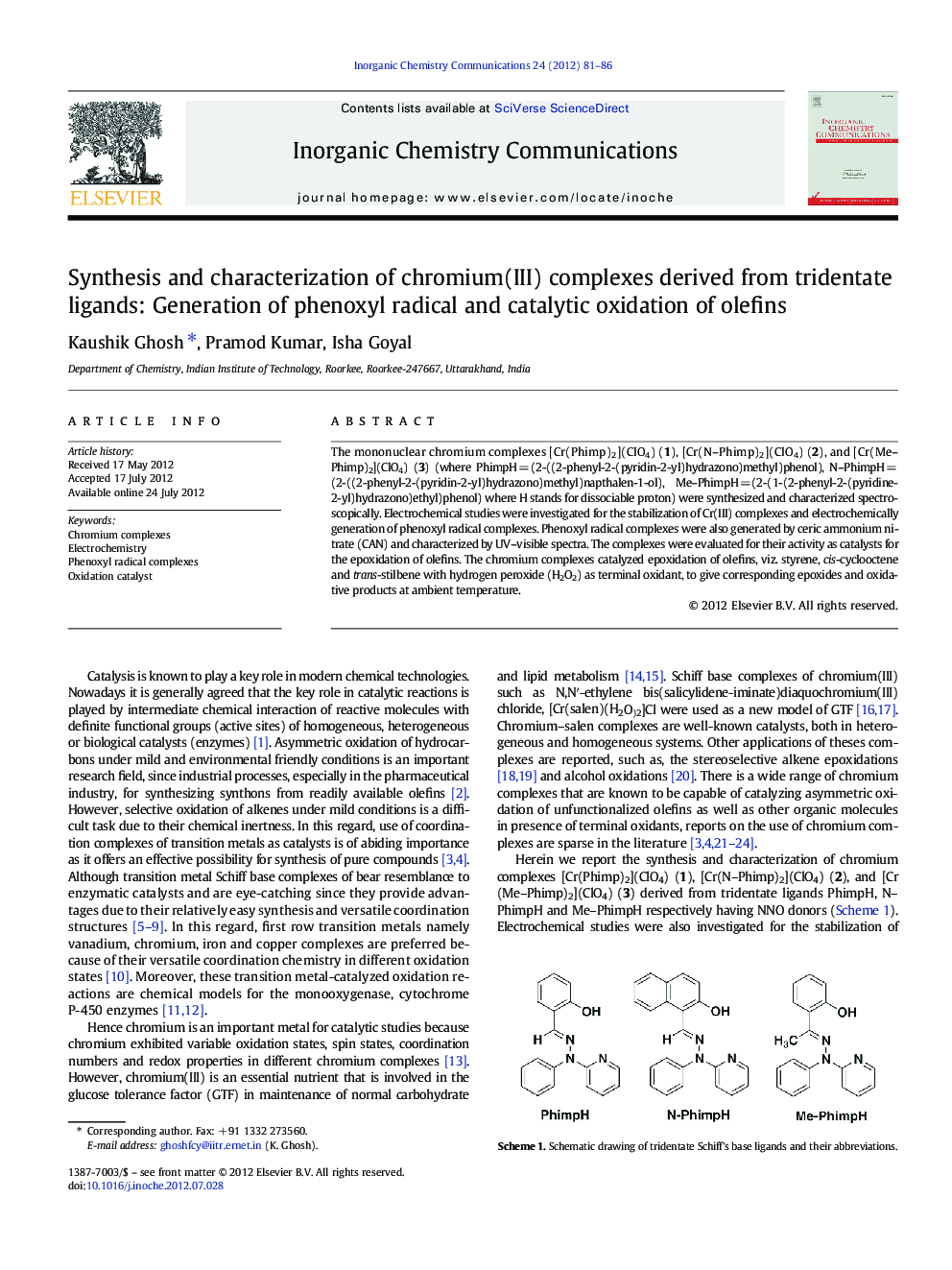| کد مقاله | کد نشریه | سال انتشار | مقاله انگلیسی | نسخه تمام متن |
|---|---|---|---|---|
| 1302319 | 1498966 | 2012 | 6 صفحه PDF | دانلود رایگان |

The mononuclear chromium complexes [Cr(Phimp)2](ClO4) (1), [Cr(N–Phimp)2](ClO4) (2), and [Cr(Me–Phimp)2](ClO4) (3) (where PhimpH = (2-((2-phenyl-2-(pyridin-2-yl)hydrazono)methyl)phenol), N–PhimpH = (2-((2-phenyl-2-(pyridin-2-yl)hydrazono)methyl)napthalen-1-ol), Me–PhimpH = (2-(1-(2-phenyl-2-(pyridine-2-yl)hydrazono)ethyl)phenol) where H stands for dissociable proton) were synthesized and characterized spectroscopically. Electrochemical studies were investigated for the stabilization of Cr(III) complexes and electrochemically generation of phenoxyl radical complexes. Phenoxyl radical complexes were also generated by ceric ammonium nitrate (CAN) and characterized by UV–visible spectra. The complexes were evaluated for their activity as catalysts for the epoxidation of olefins. The chromium complexes catalyzed epoxidation of olefins, viz. styrene, cis-cyclooctene and trans-stilbene with hydrogen peroxide (H2O2) as terminal oxidant, to give corresponding epoxides and oxidative products at ambient temperature.
Mononuclear chromium(III) complexes [Cr(Phimp)2](ClO4) (1), [Cr(N–Phimp)2](ClO4) (2), and [Cr(Me–Phimp)2](ClO4) (3) were synthesized and characterized spectroscopically. Electrochemical studies were investigated for the stabilization of Cr(III) complexes. Phenoxyl radical complexes were also generated by electrochemically as well as by ceric ammonium nitrate (CAN). The chromium complexes catalyzed epoxidation of olefins, viz. styrene, cis-cyclooctene and trans-stilbene with hydrogen peroxide (H2O2) as terminal oxidant, to give corresponding epoxides and oxidative products at ambient temperature.Figure optionsDownload as PowerPoint slideHighlights
► Chromium(III) complexes derived from tridentate ligands were synthesized and characterized.
► Electrochemical studies were investigated for the stabilization of Cr(III) complexes.
► Phenoxyl radical complexes were also generated by electrochemical as well as chemical oxidation.
► The chromium complexes catalyzed epoxidation of olefins, viz. styrene, cis-cyclooctene and trans-stilbene.
Journal: Inorganic Chemistry Communications - Volume 24, October 2012, Pages 81–86